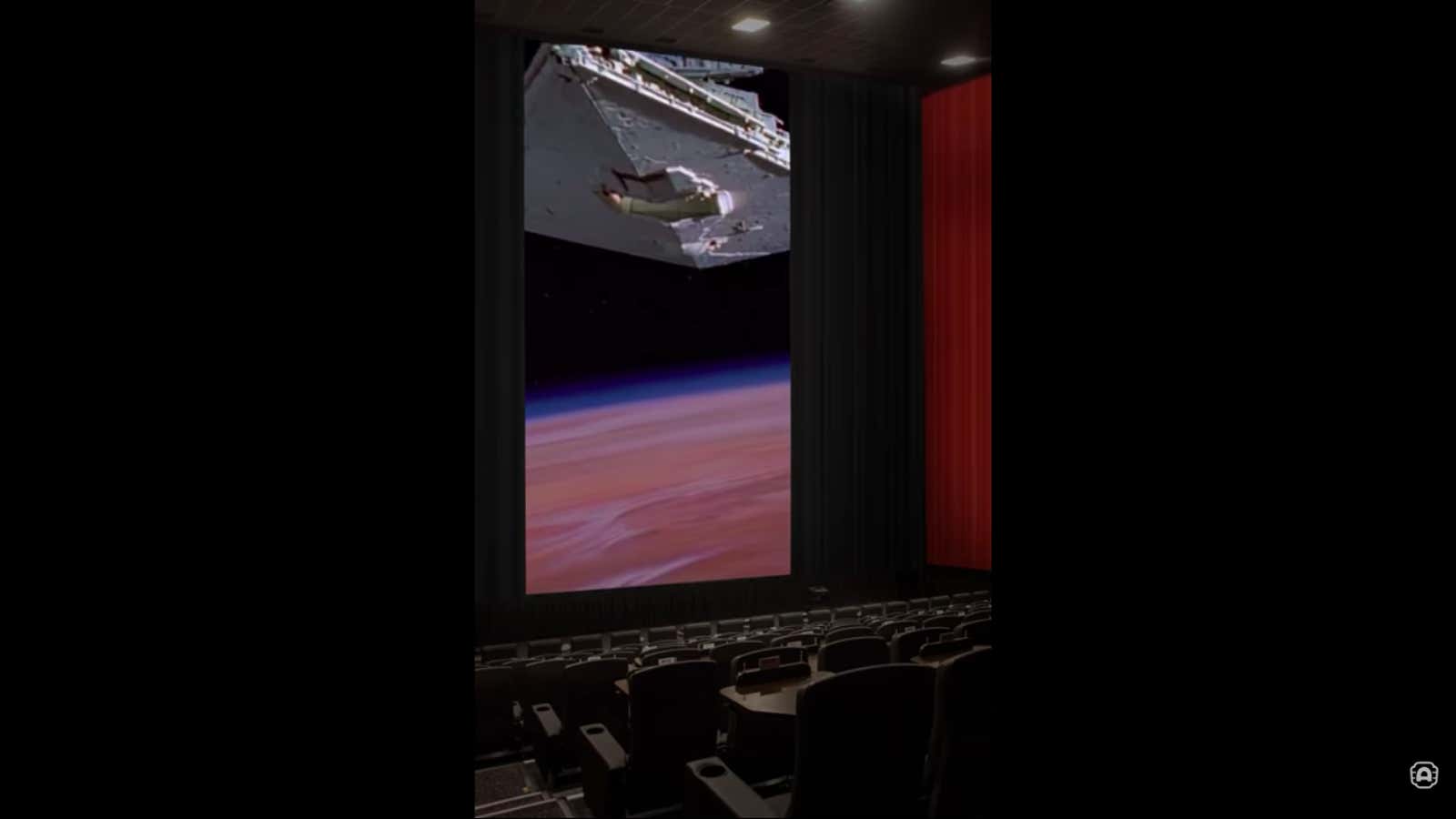What if movies were taller and thinner?
That’s the question posed by Russian director Timur Bekmambetov, who is developing “the first vertical format blockbuster,” according to Deadline. Based on the true story of a Soviet fighter pilot who led an escape out of a Nazi concentration camp in World War II, the film, titled V2. Escape From Hell, will be shot and released entirely in vertical mode, rather than in the traditional horizontal format moviegoers are accustomed to.
Though designed to be watched on phones, the film will also be shown in theaters in 2021. It’s unclear exactly what that will look like on movie screens: Either the film will be projected exactly as it was shot (resulting in two large black bars on either side of the picture) or it will be reformatted to fit the big screen. Or maybe they’ll just have viewers lie on their sides.
Portrait-mode blockbusters are just the latest example of how our technological habits are changing the long established paradigms of entertainment—especially as it relates to consuming video. Quibi is making content specifically for mobile phones that can be watched vertically or horizontally (sometimes both in the span of one 10-minute episode). Netflix is experimenting with shows viewers can manipulate to their tastes. Filmmakers like Steven Soderbergh are filming movies with iPhones. And brands are developing vertical video for apps like Tik Tok, Instagram, and Snapchat.
Bekmambetov himself has helped pioneer the “computer screen film,” in which the action takes place mostly on phone and computer screens, like in the 2018 thriller Searching, which he produced.
A mainstream feature film shot and released in portrait format, however, is new, and perhaps counterintuitive, despite the current rise in popularity of vertical video. The traditional way of watching movies horizontally is steeped not only in history (it’s rooted in the dimensions of theater stages, dating back to the Italian Renaissance), but also in biology. Widescreen is pretty close to how humans actually see the world in front of them.
(The video above was part of an April’s Fools joke from the American cinema chain Alamo Drafthouse, but now it seems one step closer to reality.)
It wasn’t that long ago when vertical video, and watching movies on phones at all, was considered taboo. In a video that went viral in 2017, director David Lynch lamented the growing popularity of the practice. “It’s such a sadness that you think you’ve seen a film on your fucking telephone,” Lynch said. Noted film critic Anne Billson once joked that people who watch movies on phones “should be shot.”
But the ubiquity of phones—and, subsequently, of vertical video viewing—is forcing filmmakers to come up with ways to make content that fits how consumers are using the technology. Studies show we hold our phones vertically 94% of the time, while videos watched vertically have a higher completion rate than ones watched horizontally.
So it makes sense mobile apps would orient much of their video content to vertical viewing. A theatrical film released in vertical formats is a different animal entirely. As the film blog Slashfilm pointed out, a World War II movie shot in vertical format is something of an anachronism. The effect of most vertical video is that it looks like someone filmed it using their phone—a device that didn’t exist then, as far as we know.
